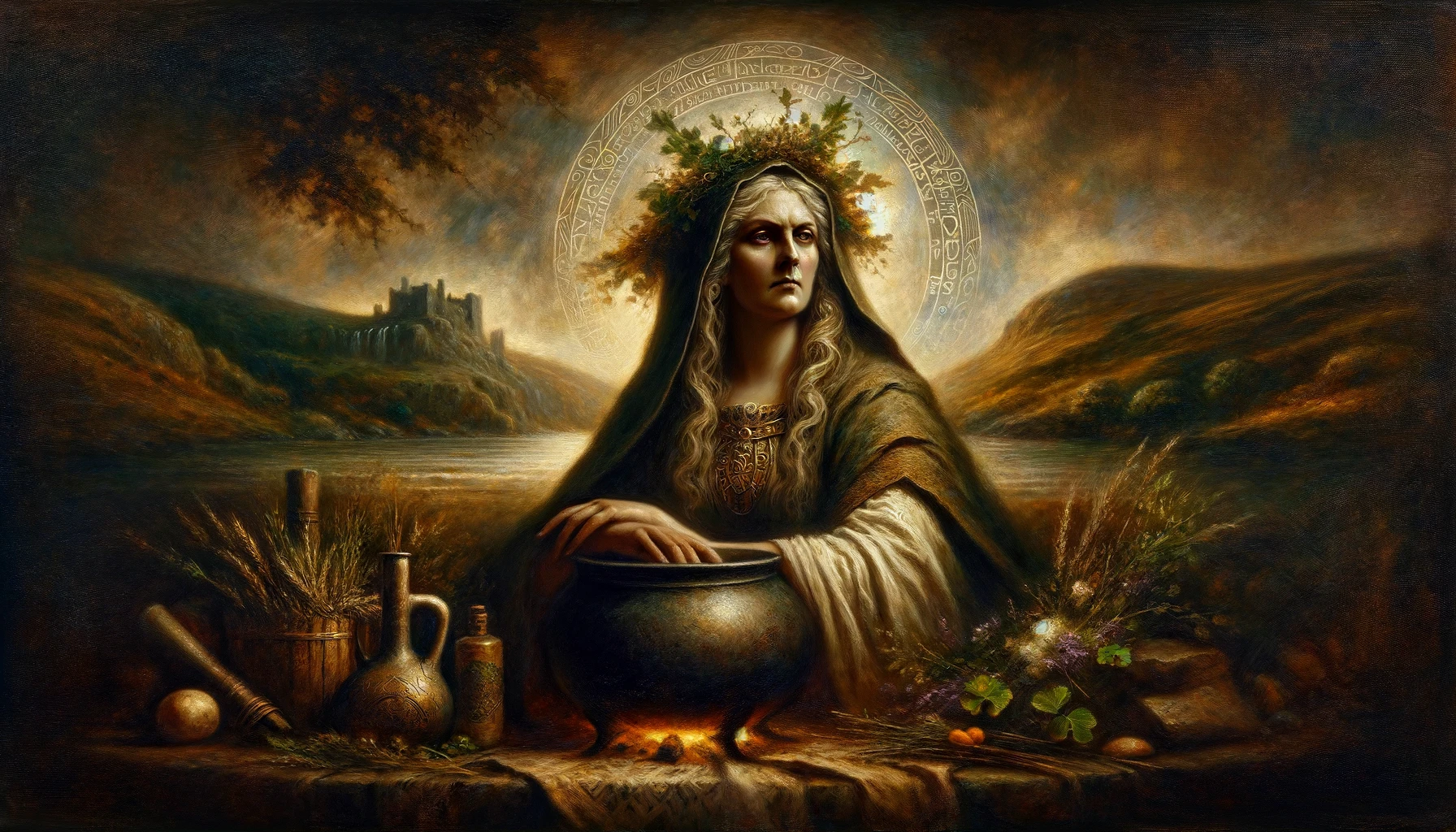Ceridwen (pronounced Ke-RID-wen) is a figure of considerable significance in Welsh medieval legend, often depicted as an enchantress or a goddess. Her story intertwines themes of magic, transformation, wisdom, and rebirth, making her a compelling figure in Celtic mythology. Her name has slight variation in different manuscripts; The Black Book of Carmarthen gives ‘Kyrridven’. Peniarth 3 gives ‘Kyrrytuen’, The Book of Taliesin variously gives ‘Cerituen’, ‘Kerrituen’ and ‘Kerritwen’, while The Red Book of Hergest gives ‘Kerituen’.
Family and Residence
Ceridwen was the mother of two children, Morfran (also known as Afagddu), who was hideously ugly, and Creirwy, who was exceedingly beautiful. She was married to Tegid Foel (“the bald”) and lived near Bala Lake (Llyn Tegid) in North Wales.
Cauldron of Inspiration
In Welsh poetry, Ceridwen is associated with the cauldron of poetic inspiration (Awen). This cauldron was a magical vessel from which she intended to brew a potion to grant wisdom and poetic inspiration to compensate for her son Morfran’s (Afagddu’s) lack of physical beauty.
The Potion
The concoction in Ceridwen’s cauldron required a year and a day to brew properly. It was tended by Morda, a blind man, while a young boy named Gwion Bach stirred it. The potion was such that the first three drops would grant wisdom, but the rest was deadly poison.
Transformation of Gwion Bach
Accidentally, three hot drops of the potion spilled onto Gwion Bach’s thumb, and upon sucking his thumb, he received the wisdom meant for Morfran. Fearing Ceridwen’s wrath, Gwion fled, leading to a transformative chase between him and Ceridwen, where they both took various forms – from animals to inanimate objects.
Birth of Taliesin
The chase ended with Ceridwen, in the form of a hen, eating Gwion, now a single grain of corn. She subsequently became pregnant and gave birth to a child, who was Gwion reborn. Despite her initial intention to kill him, she found herself unable to do so because of his beauty. She set him adrift on the ocean in a leather bag or coracle, where he was later discovered and rescued, growing up to become the legendary bard Taliesin.
Symbolism and Modern Interpretation
Ceridwen’s story is rich in symbolic meaning. She is often seen by modern pagans as a goddess of rebirth, transformation, and inspiration. Her tale reflects deep themes of knowledge, the duality of creation and destruction, and the cyclical nature of life and transformation.
Ceridwen’s narrative, first recorded in the 16th century but claimed to be part of both written and oral Welsh tradition, remains a powerful and enduring element of Celtic mythology, captivating audiences with its depth and mystical elements.
